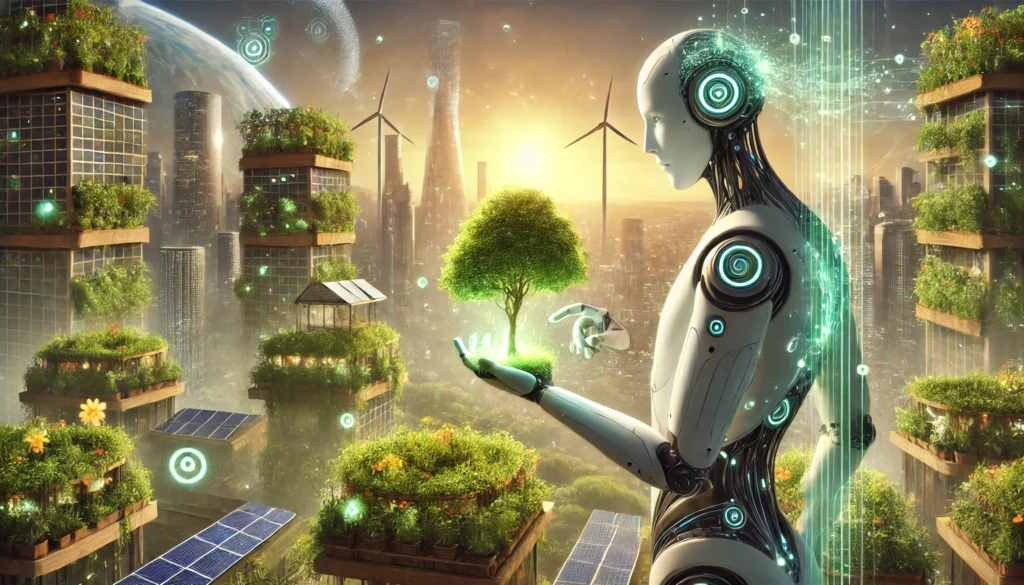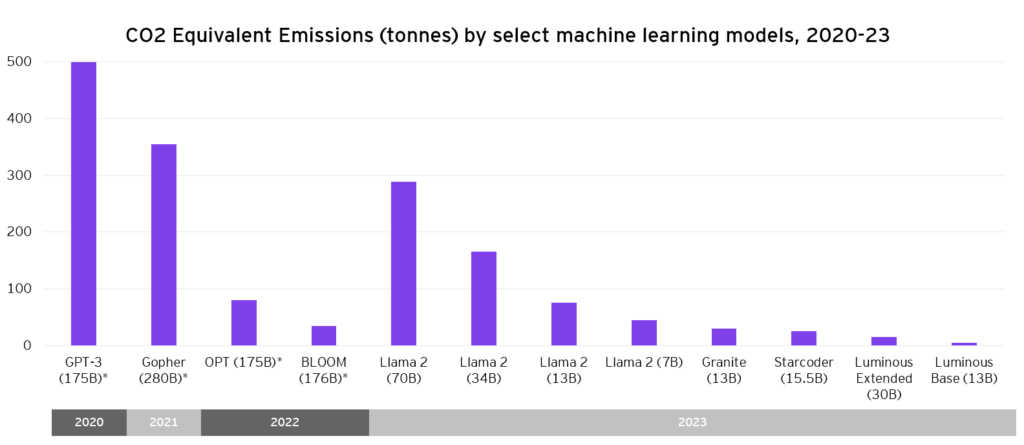AI and Sustainability: Balancing the Double Edges of Technological Progress
Artificial Intelligence (AI) is reshaping industries, economies, and societies, offering unprecedented opportunities to address global sustainability challenges. However, its environmental footprint and ethical implications demand careful scrutiny and discussion. This blog examines the dual role of AI in sustainability—its transformative benefits that could have a significant impact and critical drawbacks—while offering insights into responsible adoption.

Advantages of AI for Sustainability
1. Optimising Energy and Resource Efficiency
AI enhances energy management by optimizing smart grids, reducing energy waste by up to 29% in buildings, and balancing renewable energy integration (1). For example, Google’s DeepMind reduced data center cooling energy use by 40% through AI-driven efficiency, using code to find efficiency in hardware and software (1). AI-powered precision farming cuts water and fertilizer use by 20–40% in agriculture, minimizing waste and emissions, a win-win for the planet and energy usage. (1, 3).
2. Climate Monitoring and Disaster Response
This is something which often gets overlooked. AI can process satellite imagery and sensor data to track deforestation, pollution, and biodiversity loss all around the globe. It can also predict natural disasters like floods and wildfires, enabling timely interventions and adaptation strategies for movements worldwide. (3, 4). These applications are critical for climate resilience and aligning with UN Sustainable Development Goals (SDGs) (2, 4).
3. Sustainable Supply Chains
AI improves supply chain transparency by forecasting demand, optimizing logistics, and identifying ethical suppliers worldwide. For instance, route optimization reduces fuel consumption, while predictive analytics minimizes overproduction and ensures efficiency at every stage of local and global trade.(3, 4).
4. Green AI Innovations
The concept of “Green AI” focuses on developing energy-efficient algorithms and hardware, such as Tensor Processing Units (TPUs), which reduce computational demands. Techniques like model pruning and quantization cut energy use by up to 90% without sacrificing performance (2, 4).

Drawbacks of AI’s Environmental Impact
1. Skyrocketing Energy Consumption
Training large AI models like GPT-3 consumes 1,287 MWh of electricity, equivalent to 120 U.S. homes annually (1, 3). Data centers supporting AI could double global energy use by 2026, rivaling Japan’s total consumption and undermining net-zero goals (1).
2. Water and Carbon Footprints
AI infrastructure requires massive water resources for cooling, exacerbating scarcity in regions like the Middle East. Despite tech giants’ pledges to use renewables, emissions from companies like Microsoft and Google have risen due to AI’s expanding demands (1, 3).
3. Climate Misinformation Risks
Generative AI tools can spread climate disinformation at scale, empowering denial groups to create convincing fake content. This threatens public trust in climate science and policy (3, 4).
4. Ethical and Social Inequities
AI’s resource-intensive nature risks widening the digital divide and social inequality throughout every corner of the globe. Developing nations lack infrastructure, including electricity and water, for sustainable AI adoption. Additionally, biased algorithms in hiring and criminal justice systems reinforce and perpetuate societal inequalities. In recruitment, AI-driven hiring tools can disadvantage candidates from marginalized backgrounds due to biased training data, leading to reduced diversity and opportunities. Similarly, predictive policing and risk assessment algorithms in the criminal justice system have been shown to target minority communities, exacerbating systemic discrimination disproportionately. Without transparency, accountability, and ethical oversight, these AI-driven decisions risk entrenching existing biases rather than eliminating them. (3, 4)”
AI Model Carbon Footprints Diagram

Striking a Balance: Strategies for Sustainable AI
- Adopt Green AI Practices
- Prioritise energy-efficient algorithms (e.g., pruning, quantization) and renewable-powered data centers (2, 4).
- Invest in hardware innovations like TPUs and FPGAs to reduce computational waste (2).
- Regulate AI’s Environmental Impact
- Enforce transparency in AI’s carbon footprint and align development with SDGs (4).
- Penalize “greenwashing” and incentivize ethical AI research (3, 4).
- Combat Misinformation
- Develop AI tools to detect and flag climate disinformation (3).
- Collaborate with policymakers to establish content authenticity standards (4).
- Promote Equity in AI Access
- Support global partnerships to share sustainable AI technologies with underserved regions (4).
Conclusion: The Path Forward
AI’s potential to drive sustainability is immense, but its environmental costs cannot be ignored. By embracing Green AI frameworks, enforcing ethical guidelines, and prioritising renewable energy, we can harness AI as a force for planetary good. The future of AI must be rooted in accountability—balancing innovation with stewardship to ensure a sustainable tomorrow.
References
- How AI Impacts Sustainability: Energy Efficiency and Risks
- Green AI: Techniques for Energy-Efficient AI Systems
- AI’s Environmental Costs and Climate Disinformation
- Systematic Review of AI and Sustainability
Floom Creative | B Corp Certified
We specialise in creating narratives for brands, nonprofits and charities that have their values rooted in environmental and ethical consciousness. By communicating your vision through visual sustainable storytelling, we can help your brand to flourish.
Let’s talk! We’d love to help you with your sustainable storytelling. Contact us now.
Check out our Blog HERE
Follow us on socials:




















